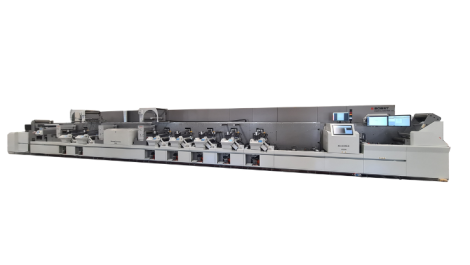John Corrall, managing director at IIJ
The print and packaging industries across Europe are facing a huge change when European Commission regulations, designed to help consumers understand more about the food they eat, come into force next month.
The strict new rules for food packaging cover a multitude of requirements ranging from details of ingredient lists, nutrition information and contact details, as well as the food source and font size.
The regulations will have far-reaching impacts on brand owners, end users and supermarkets, and that will change the face of packaging across Europe. For many, it will involve upgrading standard business procedures to cope with the Euro directives.
The relevant documentation comes under Regulation (EU) No 1169/2011, becoming applicable from 13 December 2014, which will replace the current requirements for the labelling of foodstuffs set out in Directive 2000/13/EC and the nutrition labelling requirements of Directive 90/496/EEC.
John Corrall, managing director at IIJ, the official sales and technical support centre for Konica Minolta industrial inkjet, said, ‘Five years ago we were engaged by one of the world’s foremost chocolate manufacturers that was concerned by the impact of these new regulations. It knew it needed to increase font sizes on its packaging. This meant it was no longer possible to squeeze the text for more than one language on each package. One language per package means more variation – shorter runs of different artwork. It meant that run lengths would halve or quarter so they realised the economic solution would be new digital production systems in house.
‘Even though this global brand purchased trial equipment it didn’t really progress beyond that, which I take to mean that when the new regulations come in from December the problem falls on the shoulders of the current external print suppliers. My feeling is that food companies regard it as somebody else’s problem, so printers and packers and others in the supply chain are going to be in for a nasty shock.
‘The regulations apply to the food producer, but, to me, it seems as if the right people don’t know enough yet about the regulations and their widespread impact. Do they care? Have they thought about the impact on the poor packaging suppliers?’
John Bambery, chairman of BPIF labels, said, ‘Countless artwork has to be changed to meet the deadline in December. Morrisons is one supermarket chain that went on record more than a year ago to confirm that it will need to change 10,000 details on product labels alone. My take is that the only way of doing it cost effectively is digitally, which creates a massive business opportunity for those with digital equipment.
‘While many printers will be supplied artwork by their customers, some will be asked to produce designs, and their designers need to be aware of what is acceptable and what is not. I’ve raised questions relating to the liability printers faced and it has been confirmed that the name and address of the producer of the product has the legal responsibility for ensuring that the information on the label or packaging is correct.
‘As I understand it, the UK has a voluntary code that complies with the EU rules. So if they don’t comply they are not actually breaking the regulations as they haven’t been enshrined into UK law.’






